Fish have been introduced into Colorado’s streams since the 1870s, so they’ve been around for quite a while and they have helped turn Colorado into a fishing paradise. But the state was already home to about fifty-five species of native fish that had been here for hundreds of thousands, if not millions of years—species were perfectly adapted to their environment, be it a large, muddy desert river or a swift-flowing mountain creek.
Due to habitat loss, drought, predation, competition from introduced species, pollution, and development, several of these species are now listed as threatened or endangered and are protected in the state. And each one is unusual in its special way. You can find a wide variety of fish species in Colorado’s major rivers and lakes.
Here are some of the native fish species to Colorado, in no particular order:
COLORADO’S NATIVE CUTTHROATS
Cutthroat trout get their name from the red “slash” mark along the jawline; in Colorado, they live in the high lakes and streams of the Rocky Mountains. Of the several types of cutthroat trout in Colorado, three are native: the Rio Grande, Colorado River, and the greenback. A fourth, the yellowfin cutthroat (Oncorhynchus clarkii macdonaldi), became extinct around 1900 following the introduction of rainbow trout.
Rio Grande Cutthroat Trout (Oncorhynchus clarkii virginalis)
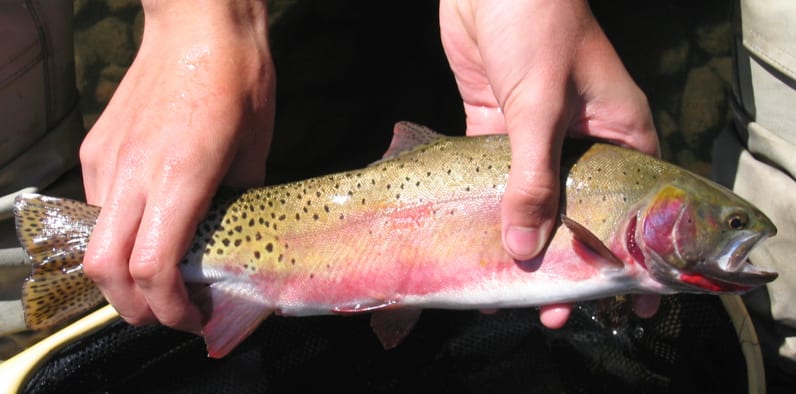
The Rio Grande cutthroat (Oncorhynchus clarkii virginalis) is found exclusively in the Rio Grande River basin and was the first trout in the West encountered by Europeans, during the 1541 Coronado expedition. These fish reach about 10 to 12 inches in length, and they require clean, cold water and lots of streamside and in-stream cover to survive.
Historically, they occupied all the cool water streams in the Rio Grande drainage, but they are now reduced to about 10 percent of their original range—perhaps 100 headwater streams—because of drought, water diversions, habitat loss, hybridization with rainbow and other species of cutthroat trout, and competition from brown trout and brook trout.
Trinchera Creek is one Rio Grande cutthroat stronghold in Colorado. Depending on their habitat, the Rio Grande cutthroat will eat insects, ants, beetles, grasshoppers, mayflies and dragonflies, even things like snails, frogs, salamanders, and small trout or minnows.
Colorado River Cutthroat Trout (Oncorhynchus clarkii pleuriticus)

Colorado River cutthroat (Oncorhynchus clarkii pleuriticus) lived historically in most of the cool water habitats of the Colorado River Basin from southern Wyoming to northern Arizona. In Colorado, they have been stocked into alpine lakes that previously lacked any fish and they are popular for fly fishing.
Many fishermen consider them to be one of the most beautiful fish in North America; they are brilliantly colored and each population differs somewhat in its coloration and patterning. Currently, they occupy about 15 percent of their original range, mostly in streams and lakes above 8,000 feet in elevation.
Greenback Cutthroat Trout (Oncorhynchus clarkii stomias)

The greenback cutthroat (Oncorhynchus clarkii stomias) is the easternmost cutthroat subspecies and Colorado’s official state fish. They are thought to have evolved from a population of cutthroat that made it over the continental divide during the last ice age and evolved into separate subspecies. The greenback grows to about 22 inches and has gorgeous bright spawning colors and the largest spots of all cutthroats.
The greenback is listed as threatened and is protected in Colorado. The species declined due to pollution in the rivers and water diversions, as well as competition and predation from introduced fish. Genetic and geographical research in the early 2000s determined that there was only one pure population of greenback cutthroat, living within about four miles of the stream above a natural waterfall in a creek near Colorado Springs.
This population appears to have been found from stock collected in the South Platte River basin in the late 1800s, so those fish have survived for 130 years as an isolated and self-sustaining population. There is currently a recovery effort focused on replicating the fish in hatcheries and then re-establishing populations within their native range.
OTHER NATIVE FISH IN COLORADO
Green Sunfish (Lepomis cyanellus) and Orangespotted Sunfish (Lepomis humilis)

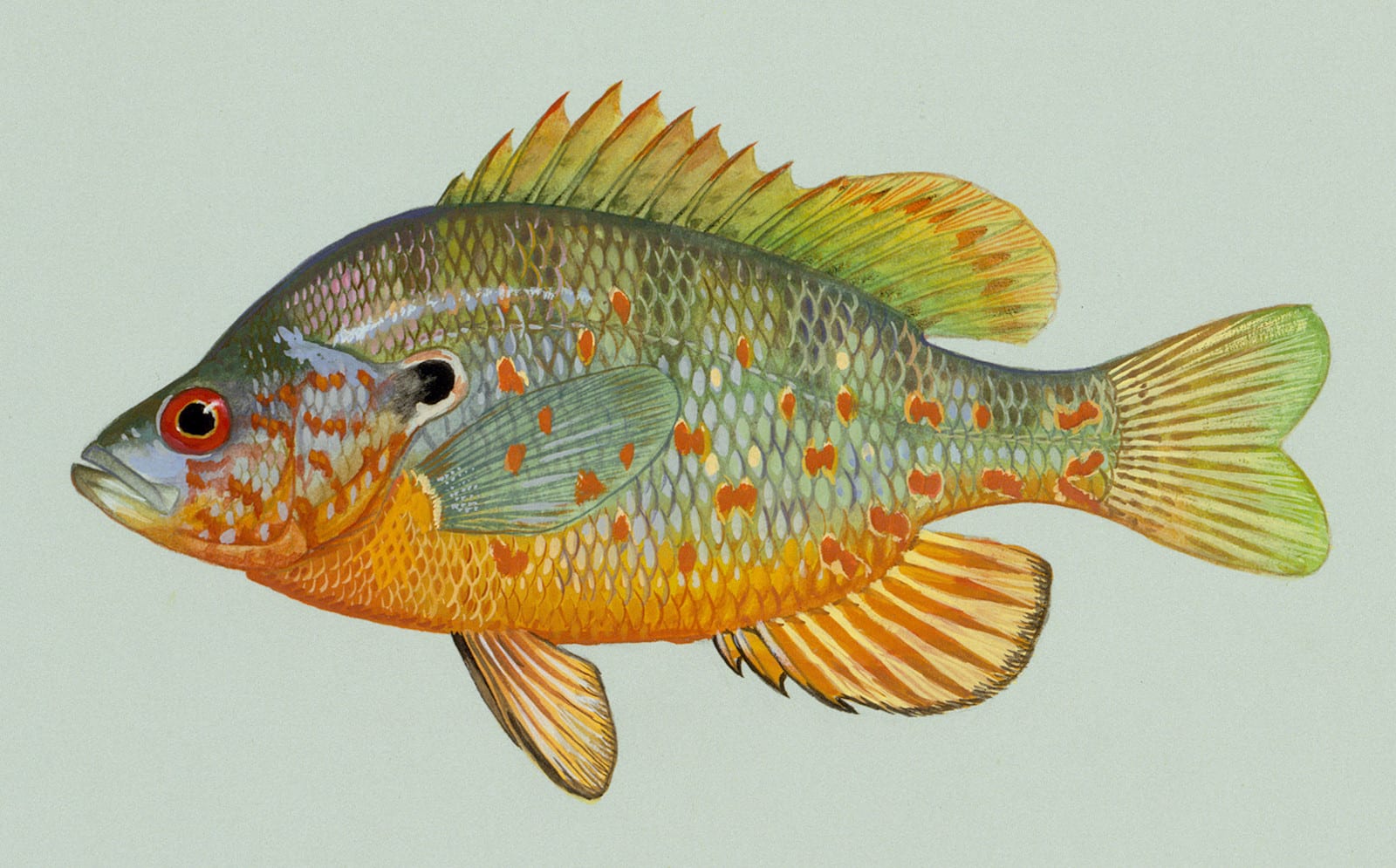
Both the green and the orangespotted sunfish are native to the rivers of the High Plains in Eastern Colorado. The green sunfish in particular has been stocked in many drainages across the state and it is a popular species for beginning fishermen.
It is an aggressive species and will strike at pretty much anything including insects, frogs, crayfish, and small fish. Plus, individuals are only about five to eight inches in length, so they are easy for beginners to handle.
Channel Catfish (Ictalurus punctatus)

“Channel cats” are easily recognizable fish, and the most widespread catfish in North America; they occupy rivers, lakes, and reservoirs across the eastern two-thirds of the continent from southern Canada to central Mexico. They are native to eastern Colorado, but they’ve been stocked in warm water reservoirs and rivers throughout the entire state.
These odd-looking fish are exceptionally well-adapted to fishing in dark and muddy waters. They have taste buds located all over their body (especially in their barbels, or “whiskers”). They also have extremely sensitive olfactory receptors and the ability to amplify sound waves in the water.
Channel cats are omnivores and will eat just about anything. They’ve been caught with crickets, worms, frogs, raw steak, and chicken liver. Apparently, someone even caught one with a bar of soap. They can grow as large as 40 or 50 pounds, but usually, they are about two to 10 pounds. Channel cats are very popular for fishing because they make delicious eating, especially fried and blackened.
Black Bullhead (Ameiurus melas)

The black bullhead is another type of catfish, native to the slow-moving, mud-bottomed rivers of eastern Colorado. They have a very high tolerance for living in dirty water and can hibernate and survive periods of cold or low oxygen. Although they are smaller than channel cats and not as popular for sport fishing, if they are caught in clean water, they are tasty to eat.
Mountain Whitefish (Prosopium williamsoni)

The mountain whitefish is native to the Yampa and White rivers, and it has been introduced into the Colorado and the Cache la Poudre rivers. It is one of the most widespread fish in the West; you can find them from central Canada into northern California and Utah. Whitefish grow to about 20 inches and are silvery white with a darker back, a small mouth with no teeth, and a forked tail.
Whitefish require deep pools and clear, clean water; they are very sensitive to pollution. They feed by using their tail and pectoral fins to stir up the substrate and expose insect larvae, snails, crayfish, and other invertebrates. Since they are bottom feeders, many anglers consider them less desirable. But many people like the taste and consistency of whitefish flesh, and it is considered by some to be a delicacy when smoked.
Arkansas Darter (Etheostoma cragini)
The Arkansas darter is a tiny member of the perch family and is found only in the Arkansas River drainage in Colorado, Oklahoma, Kansas, Missouri, and Arkansas. Although it’s only about 2 inches long, it will move several miles up or down a stream for feeding and breeding.
Darters eat aquatic insects and prefer cool water with lots of leafy vegetation in spring-fed pools, marshes, and slow streams. Because of this, groundwater pumping and drought threaten the darter in much of its range, and it is protected in Colorado.
ENDANGERED FISH OF THE COLORADO RIVER BASIN
Colorado Pikeminnow (Ptychocheilus lucius)
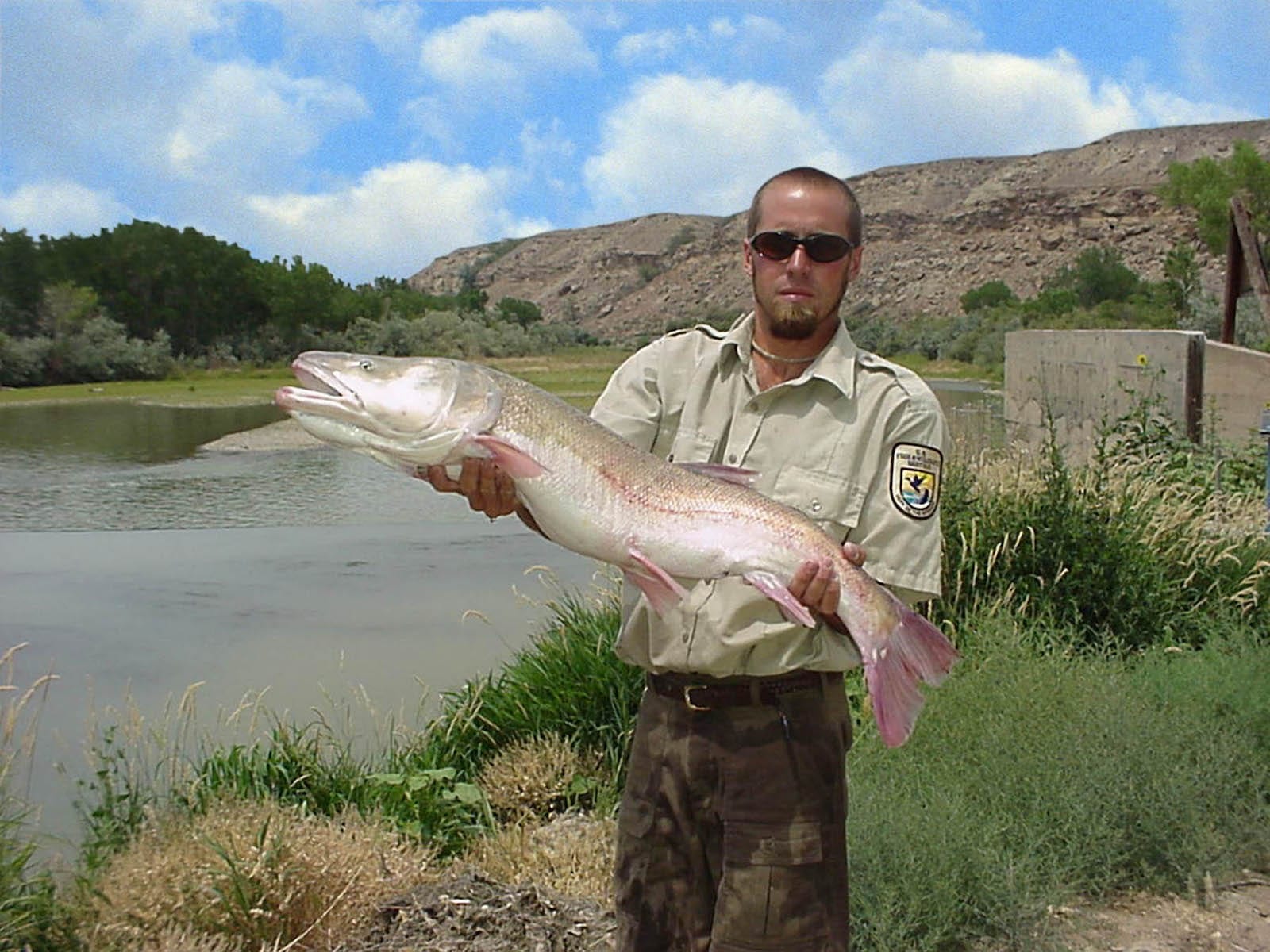
Biologists think that the Colorado pikeminnow has been around for more than 3 million years and, even though it sounds like a contradiction in terms, it is North America’s largest minnow. Early travelers describe fish up to six feet long and weighing 80 pounds. Pikeminnows can live up to 40 years and need to travel long distances (sometimes more than 200 miles) for their spawning runs.
They are perfectly adapted to life in muddy water; they hunt using chemical and electrical stimuli instead of sight. Another odd thing about pikeminnows is that, although they are efficient predators of other fish, they don’t have normal teeth. Instead, they have pharyngeal teeth—a bony structure in their throat that helps process food.
Pikeminnows used to be extremely abundant in the Colorado River and its tributaries from Wyoming to California. They were incredibly tasty and were an important food source for early settlers and explorers, some of whom describe fishing pikeminnow with pitchforks, they were so common. It was sometimes called “white salmon” for the taste of its flesh and its spawning behavior.
But it wasn’t overfishing that caused the pikeminnow’s steep decline. Dams blocked spawning runs and access to feeding grounds, and non-natives competed for resources and ate their young. The pikeminnow was listed as endangered in 1967. In Colorado, the pikeminnow is protected; small populations exist in the Yampa and the Green, the Little Snake and White rivers, and in the Colorado and the Gunnison rivers.
Razorback Sucker (Xyrauchen texanus)
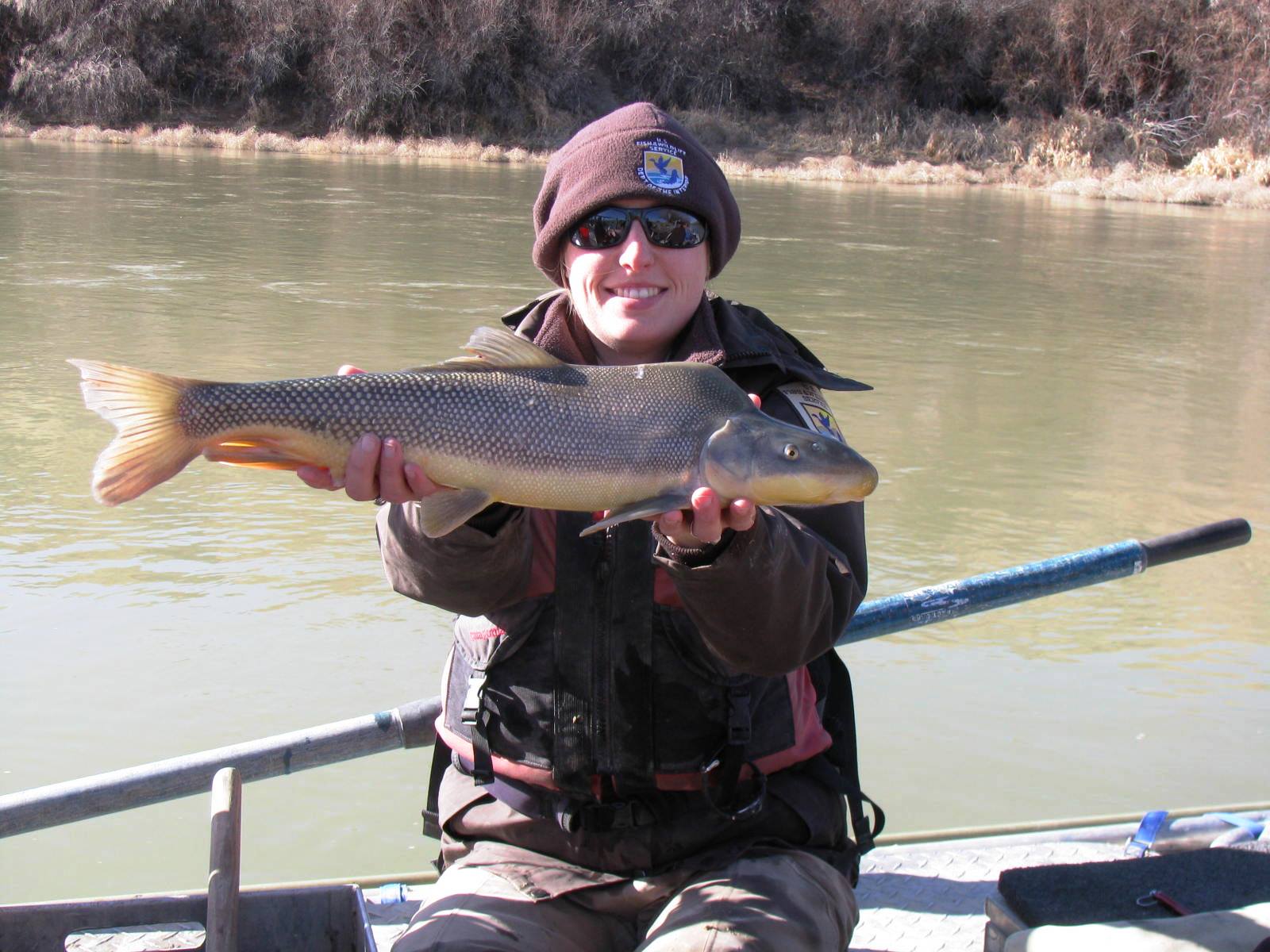
Like the pikeminnow, the razorback sucker is a large, long-lived fish that used to live throughout the large rivers and tributaries of the Colorado River drainage but is now extremely rare upstream of the Grand Canyon. These fish can grow to about 15 pounds, and live as long as 40 years.
Like most suckers, they can eat both plant and animal material and they love invertebrates, algae, plankton, and insect larvae. Because of their size, they live in large streams, and they prefer a variety of habitats, from the main channel to backwaters and floodplains for breeding.
In Colorado, razorbacks have only been seen in the Gunnison, lower Yampa, Green, and lower mainstem Colorado. There was a reproducing population in the Colorado River near Grand Junction, and biologists are working to restore more of them to the Green, Colorado, Gunnison, and San Juan rivers.
Humpback Chub (Gila cypha)
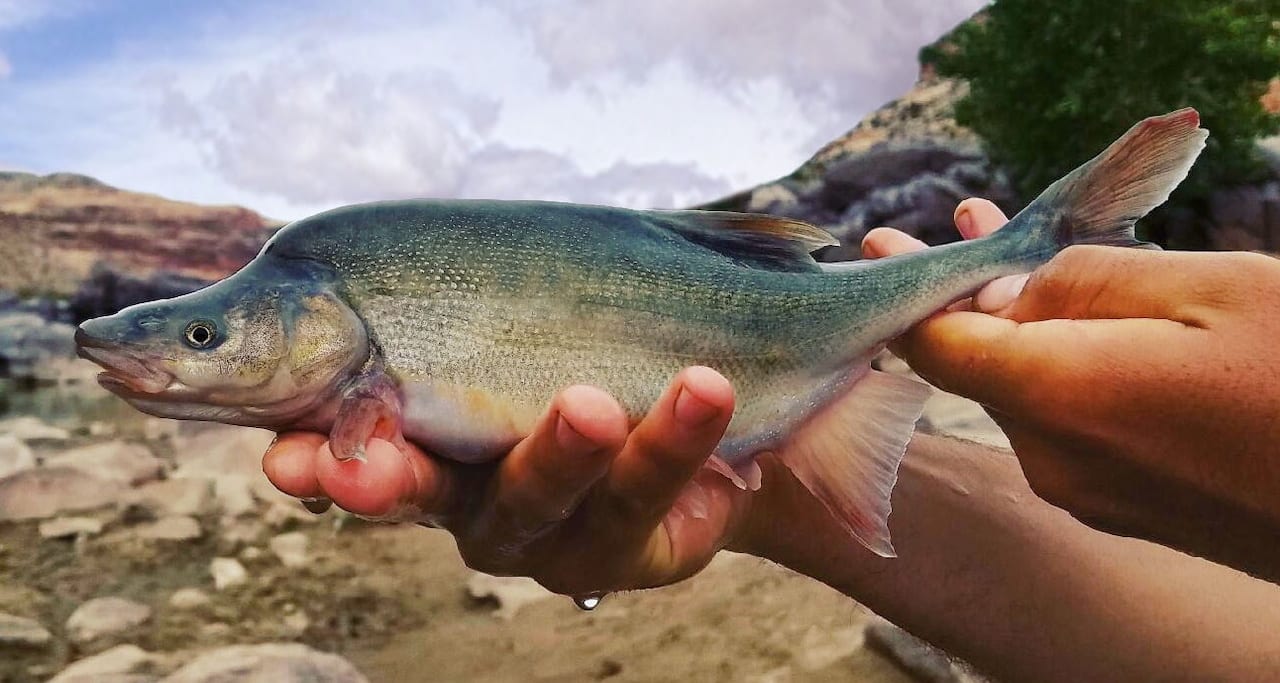
The “chub” is perfectly adapted to the large waterways of the Colorado River drainage, especially the Green, Yampa, and the state’s lower reaches of the Colorado River. It’s a peculiar-looking fish, with a big hump on its back between the head and dorsal fin, and huge nostrils in a long-nosed face. But the large nostrils help it find its food by smell more than sight in muddy water, and the “hump” acts as a hydrofoil in swift floods.
This silvery minnow grows to about 20 inches and feeds on plant material, plankton, and insects. They used to be extremely abundant (early explorers say the chub were so thick that they could pull them out of the water by their tails). But dams, diversions, and competition from introduced fish have reduced their numbers.
The largest population of chub is in the Grand Canyon, but there are small populations in a few other reaches of the Colorado River Basin in Colorado and Utah. The humpback chub is listed as endangered and is protected in Colorado.
Bonytail Chub (Gila elegans)

The bonytail chub is a more streamlined cousin to the humpback chub with a long, thin tailstock (from which it received its name); one old-timer from Craig described them as “broomtails,” because he could grab them by the tail as easily as a broom handle.
Like other members of the chub group, they feed on plant material, plankton, and insects, and their bodies enable ease of movement in swift water. Individuals may reach 22 inches in length and live as long as 50 years.
The bonytail chub is the rarest of the endangered Colorado River fish species, and a self-sustaining wild population no longer exists, meaning that the species is functionally extinct. Efforts are underway to restore the population in the Upper Colorado River Basin.
Fish are raised at the J.W. Mumma Native Aquatic Species Restoration Facility in Alamosa and are then reintroduced into the Green and Upper Colorado rivers in Colorado and Utah. Once released, the fish are monitored for evidence that they are reproducing, and biologists are working on creating floodplain wetland habitats to support the growth and survival of young fish.
The state of Colorado is part of the Upper Colorado River Endangered Fish Recovery Program, a coordinated effort between more than a dozen local, state, and federal organizations working to restore these species of endangered fish to the Upper Colorado River system.
By moderating dam releases, restoring flooded bottomland habitats, and reducing the number of predatory fish such as smallmouth bass and trout, they have had some success raising population numbers in recent years and providing suitable habitats for the survival of young fish.
Other native fish of special concern in Colorado include the stonecat (Noturus flavus) and the brassy minnow (Hybognathus hankinsoni) in eastern Colorado; the Flathead chub (Platygobio gracilis) in the Arkansas River drainage; the Rio Grande sucker (Catostomus plebeius) and the Rio Grande chub (Gila pandora) in the Rio Grande drainage; and the bluehead sucker (Catostomus discobolus) and roundtail chub (Gila robusta) in the Colorado River drainage.
If you accidentally catch one of Colorado’s declining or protected species, please return it unharmed to the water as soon as you can. And enjoy your time out there with Colorado’s native fish!
D

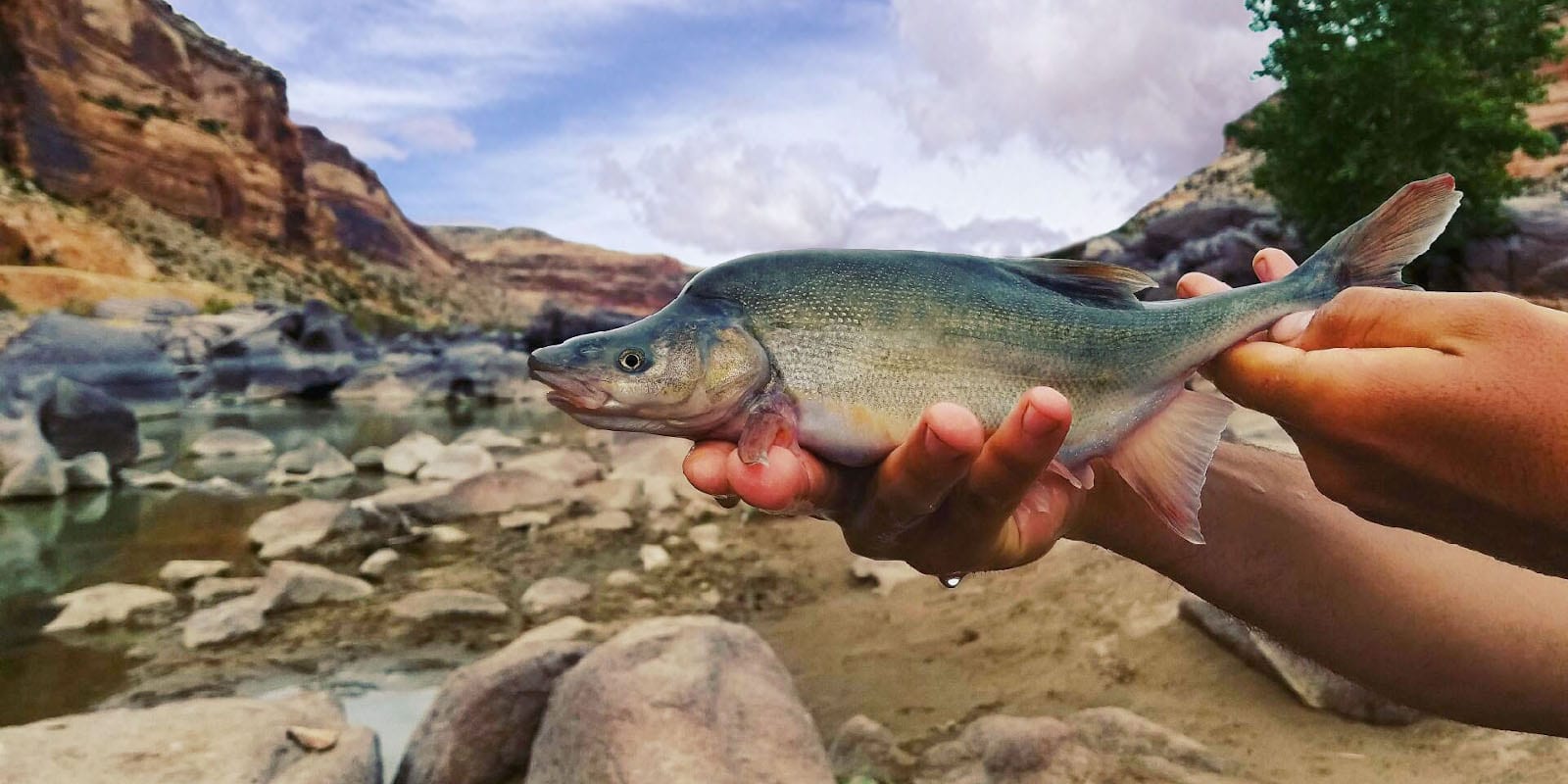
 The Continental Divide through Colorado
The Continental Divide through Colorado